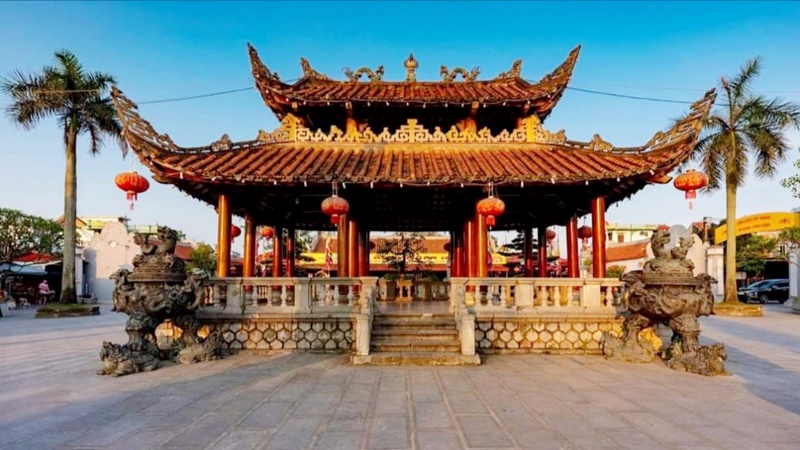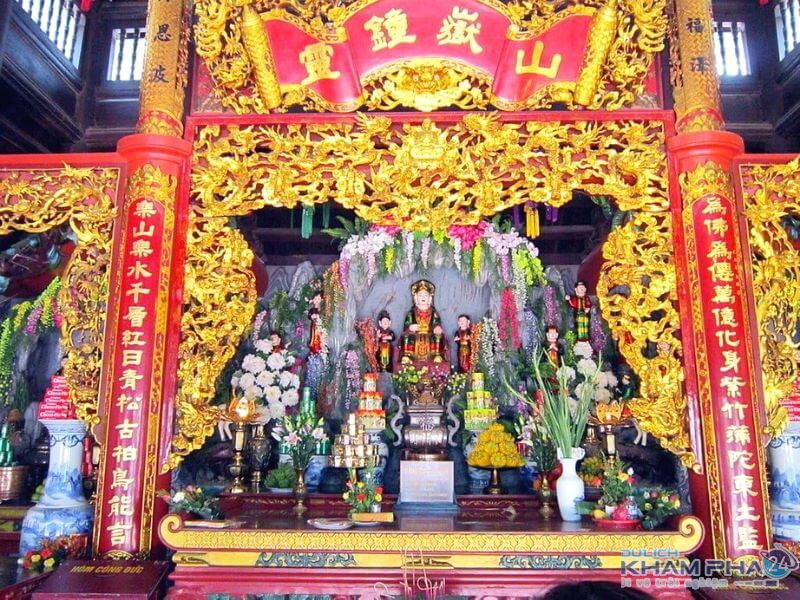Phu Day
1. Overview
Phu Day (Vietnamese: Phủ Dầy) is a sacred spiritual complex located in Kim Thai Commune, Vu Ban District, Nam Dinh Province. It is best known as the center of the Mother Goddess (Đạo Mẫu) religion in Vietnam, dedicated to the worship of Saint Mother Lieu Hanh (Thánh Mẫu Liễu Hạnh)—one of the Four Immortals in Vietnamese folk belief.
Every year, Phu Day draws thousands of pilgrims and visitors, especially during its grand annual festival in the third lunar month.
2. Historical Background
Phu Day is closely associated with Saint Mother Lieu Hanh, a mythical figure believed to be the incarnation of a fairy who returned to Earth to help people and uphold justice. According to legend, she passed away and ascended to heaven in this area, making it a sacred place for her worship.
The complex dates back to the 17th century, and over time, it has expanded to include multiple temples, shrines, and Buddhist pagodas. The current structures have been restored and preserved through the contributions of both the government and the local community.
3. Architectural Highlights
Phu Day is not a single structure, but a complex of religious sites, with architecture that showcases the essence of Vietnamese traditional temple design, including curved roofs, dragon motifs, and ornate carvings.
Key highlights include:
-
Tien Huong Temple (Đền Tiên Hương):
The main temple dedicated to Lieu Hanh. It features elaborately decorated altars, ceremonial objects, and large statues of the Mother Goddess and her attendants. -
Van Cat Temple (Đền Vân Cát):
Another major temple in the complex, known for its grand courtyards and detailed interior sculptures. -
Chua Phu Day (Phu Day Pagoda):
A Buddhist pagoda within the complex that blends Buddhism with indigenous Mother Goddess beliefs. -
Stone and wood carvings:
The buildings are richly adorned with symbols of phoenixes, dragons, lotus flowers, and scenes from Vietnamese folklore.
4. Cultural and Religious Significance
Phu Day plays a central role in preserving and promoting Đạo Mẫu, Vietnam’s indigenous religion which was recognized by UNESCO as an Intangible Cultural Heritage of Humanity in 2016.
Key activities at Phu Day include:
-
Phu Day Festival (from the 3rd to the 8th day of the third lunar month):
A vibrant celebration that includes hau dong (spirit possession rituals), music, dance, and processions in honor of the Mother Goddess. -
Worship of the Four Palaces (Tứ Phủ):
Representing Heaven, Earth, Water, and Mountains, a major belief system within the Đạo Mẫu religion. -
Pilgrimages and spiritual offerings:
Devotees from across the country come to pray for peace, fortune, and spiritual guidance.
5. How to Visit and Enjoy
-
Location: Kim Thai Commune, Vu Ban District, Nam Dinh Province.
-
Best time to visit: During the Phu Day Festival (around March–April, depending on the lunar calendar).
-
Getting there: Around 90 km from Hanoi; it can be reached by car, bus, or motorbike.
-
Travel tip: Try to witness a hau dong performance—an essential ritual that combines music, costumes, and trance-like dances.
Conclusion
Phu Day is more than just a religious site—it is a living museum of Vietnam’s rich spiritual culture. With its historical depth, stunning architecture, and vibrant ceremonies, Phu Day offers an unforgettable cultural and spiritual experience for anyone visiting Nam Dinh.




